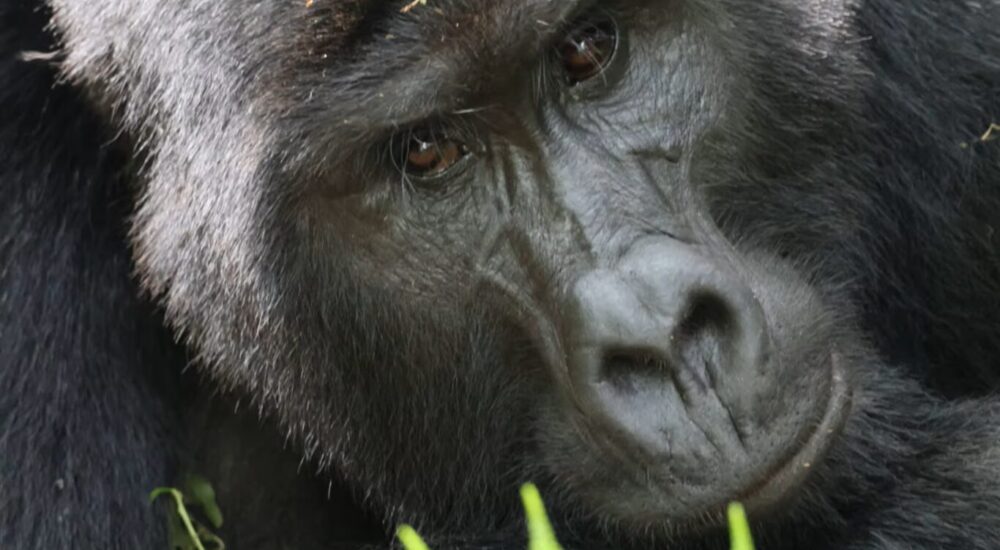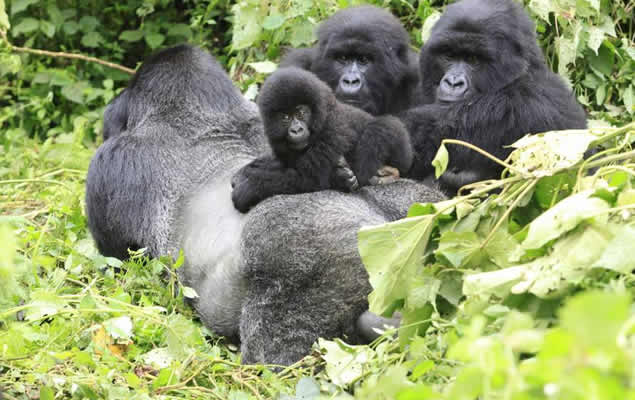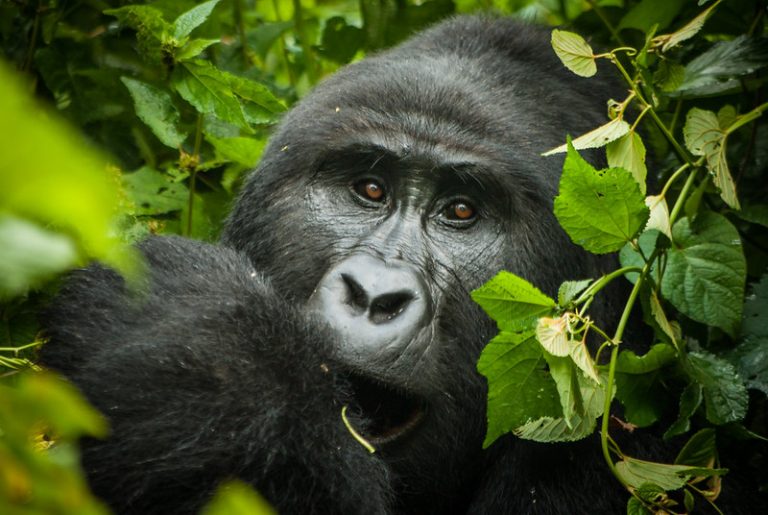What is Gorilla Trekking? Best Destinations for Family-Friendly Gorilla Trekking Preparing for Your Gorilla…
Best places in the world to see Gorillas.
Gorilla Trekking Cameroon
Lobéké National Park is a protected region in Cameroon where Gorillas do reside, it consists of various Western Lowland Gorillas in Africa living in the dark dense forests of the Congo River basin in south of Cameroon. Lobéké National Park is bordered by Boumba National Park in the North West a, Sangha River in the East that splits Cameroon from CAR and Congo. It was gazetted as a national park in October 1999 and covers an estimated area of 2178 km 2 with animals like African Forest Elephants, Red forest Buffaloes, Bongo antelopes, Black colobus Monkey, Sitatunga, Chimpanzees, Western Lowland Gorillas, Leopards, Forest ungulates, 215 species of Butterflies, 18 Reptiles, 16 species of Amphibians and 130 species of fish and more in the Rivers and Lake Lobeke. Nocturnal mammals like Galagos, Pottos, Hyrax, Bats, Night jars, Civets and Genets which you will sight in the night walks.
Travel Options
The park has gotten 3 Airstrips which do receive private flights and charters from Yaoundé and Douala Airports. When travelling by Road you will go through villages of Abong Mbanga, Doume and Molondou using a 4*4 vehicle, from Yaoundé – Bertoua covers 341 km in a duration of 6 hrs drive, from Yakadouma – berta takes 7 hrs drive of about 304 km and from Yakadouma- Mambele covers 165 km in about 5 hrs drive.
When to visit Lobéké National Park (Cameroon)
There are 2 rainy seasons in this park, having long rains in the months of September – November and short rainy season in months of March to June. December -February are the best months to visit this park because the roads the park tend to be more firm and more wild animals spotting is formally assured.
Where to stay while in Lobéké National Park- Cameroon
At Lobeke National Park there are 2 lodges-Djembe Camp located in the East of the Sangha river and Kombo camp situated on the Western side near Mambele village. These 2 camps have basic places where to stay facilities in twin rooms, fitted toilets with maximum accommodation for up to a total of 16 persons per night. Early booking is very significant for this accommodation.
Why visit Lobéké National Park?
Also a favourite with poachers, most people venture this far to see Western Lowland Gorillas in the wilds. It is situated far from the main centers of population and covers a minimum of 2 days to get there along an unpaved road. Lobéké will be one of Cameroon’s premier wildlife viewing destinations.
What will it cost me to enter Lobéké National park
One is charged with a fee of CFA 5,000 per person per day as entrance fee
Well there is a daily meeting of trekkers before commencing their actual hiking in which they are briefed, rules and regulations outlined for them as to be respected and followed in the Gorilla trekking activity. There are rules given before you set off (before Gorilla trekking), During the Hike, when with the mountain Gorillas and General health rules as stated below; –
Before setting off/ departing/leaving for Gorilla trekking activity
- A total number of 8 visitors or tourists is allowed to track /visit a particular mountain gorilla family or group in a day. This number considered helps to reduce behavioral disturbances that humans may cause to these mountain gorillas. It also helps to reduce on the chances of transferring diseases from humans to the mountain gorillas.
- Before your trekking exercise -set off, ensure to have your hands washed thoroughly well. This is to promote the highest level of cleanliness.
During the hike
- You are advised to keep your voices extremely low as you are heading to track the mountain Gorillas and requested to even be quieter when you finally meet them. This enables you get an opportunity to watch the other various wildlife species in the course of the trail like Birds, Golden Monkeys, Butterflies, etc. Still the peace of these animals is not disrupted at all.
- Always follow your tour guide through the whole trekking process and make sure you stick with the group for both safety purposes and also be able to get thorough explanations of the attractions seen along the way to the mountain Gorillas.
- Do not recklessly litter rubbish in any National park or protected area. You are requested to keep any garbage or trash on you until you are back at the briefing point then dispose it off.
- As you approach the place where the guides observed the mountain Gorillas the day before, from there you will follow the Gorilla traces to find them, and look out for the Gorilla nesting sites along the way.
- The guides will inform you to get ready when approaching the mountain Gorillas.
Finally, when with the Gorillas
- You are requested to keep a distance of 7m (21 feet) from where the mountain Gorillas are. Though they are habituated, mountain Gorillas are still wild animals and if they feel threatened they can move away.
- Keep in a tight group whenever near the mountain Gorillas, Eating, Drinking or smoking is prohibited in the presence of these Gorillas and keep your voices as low as possible but then you are free to ask questions from your guide.
- Do not look closely and straight /directly in the eyes of the Gorillas, sometimes these animals do charge. Do not attempt to run away because that will increase the risk.
- Do not touch the Gorillas because they are wild animals and flashy photography is not allowed, so move slowly and carefully when going to do that.
- The time spent with the Gorillas is limited to one hour this is simply to minimize any behavioral disturbances, stress and possible risk of infection.
- Keep your voices very down after the visit until you are 200m away from these animals.
- Body language is important and visitors should not raise hands or arms, or point, nor stare at them because to gorillas their behaviours are signs of threat or aggression.
The General Health Rules
- All wastes must be buried, a 30m hole is dug, dispose of every waste there then fill up the hole when finished. This is done because these wastes(faeces) can highly be infectious to the great apes and other animals.
- If you feel ill, carrying a contagious disease, please don’t engage yourself in the activity. So another visit will be arranged for you or your money refunded back.
- Respect the number of visitors or tourists recommended a day to visit or see the Gorillas because this minimizes the risk of disease transmission and reduces stress to the group, strain and behavioral disturbance, to reduce the possibilities of possible future aggression towards tourists and to prevent the Gorillas from becoming too habituated to humans.
- Always stay away from the Gorillas,7m (21 feet). This protects them from catching human diseases.


